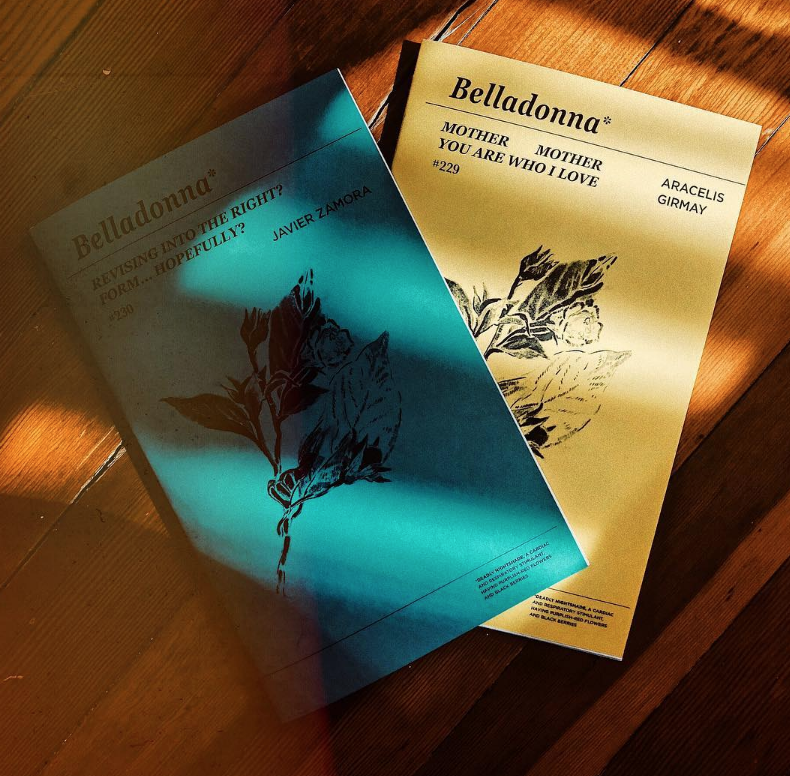
Belladonna Founder Rachel Levitsky on Poetry, Politics, and What Comes Next
EJB: Were you writing poems throughout this period?
RL: During my years in Albany, 1982 to 1988, I’d read and gone to poetry readings by lesbian feminist poets: Elly Bulkin, Hattie Gossett, Gloria Anzaldua, Cherrie Moraga, Pat Parker, Adrienne Rich, Linda Smukler. They were being published by small feminist presses, Firebrand, Aunt Lute, the Women’s Press Collective, and Kitchen Table.
When I returned to the US in October 1994, after my year in Mexico, I lived in a small, dark Manhattan apartment that a friend’s girlfriend’s parents were not using. I began being woken up in the middle of the night, fully-formed poems in my head. I think that learning Spanish—and having that dislocate certain formations, and being in the dark—made the repression of poetry impossible. I was no longer in control.
This led me to the Naropa Institute, now Naropa University, where I got a Masters in Writing and Poetics in 1998.
EJB: How was your political consciousness formed during all this creative foment?
RL: Perhaps it seems ironic today, since Zionism is associated with a digging-in to the right, but my first egalitarian political experiences, the place I first met left-wing radicals, was in Young Judea. The chapter where I grew up, in a suburb of New York City, promoted girls in leadership; for the first time in my life, I was rewarded for being outspoken.
It was later, on a one-year program in Israel in 1981 and 82, that I awoke to the facts of race, class, and gender. Israel is where my nascent feminism and progressive values developed, a reaction to the differences I saw in how European, Iranian, Iraqi, and Moroccan Jews were treated.I was volunteering in a Moroccan community in the projects of Tiberius, and the difference were literally articulated in the plan of the town. Seeing this seeded my lifelong radical, leftist, feminist politics.
EJB: What led you to found Belladonna?
RL: It became apparent to me early on in my study of poetry that there was a separation between avant-garde and feminist poets. Some of the poets I was reading, clearly feminists, were not being published by feminist presses. I didn’t understand it. As a new poet, my reading expanded to poets like Lyn Hejinian, Nicole Brossard, and Erica Hunt. They were being published in avant-garde, but not feminist contexts.
While I was at Naropa, I tried to create a bridge between the two, and started the Left Hand Reading Series at an anarchist bookstore. I wanted it to be a place where avant-garde and left, intersectional, and feminist poetry would meet. There are traditions of this in the rest of the Americas—in Canada, Mexico, and Central and South America—but not in the US.
Belladonna got birthed in the apartment of Cindra Feuer in 1999. I’d met Cindra in 1992, on a bus traveling to a pro-choice march in D.C. Her roommate was Katherine Welsh. Katherine had just leased the space that became Bluestocking Bookstore on the Lower East Side of Manhattan. I nervously asked her if I could start a feminist avant-garde reading series in the store; I envisioned it being about language experimentation. I wanted to bring in feminists who were not being published by feminist presses. It was to be an all-woman series, with both emerging and established poets and an open mic. Katherine agreed to let me do it. The series started slowly, but over time people started to show up. Later, we began going to someone’s house after the readings to continue the conversation and eat—the Belladonna salon!



